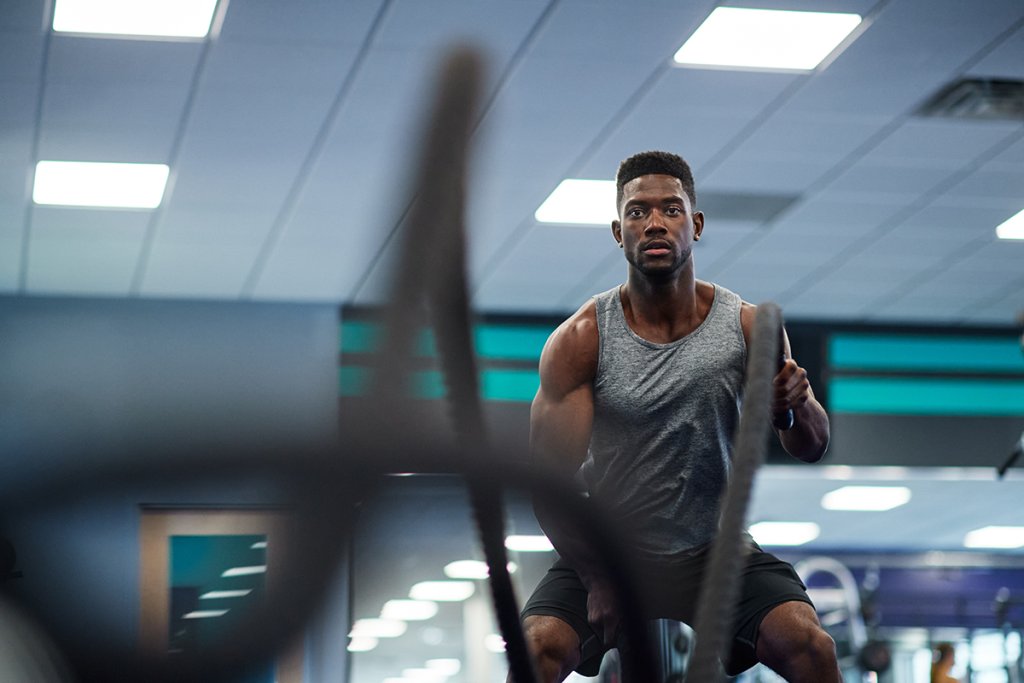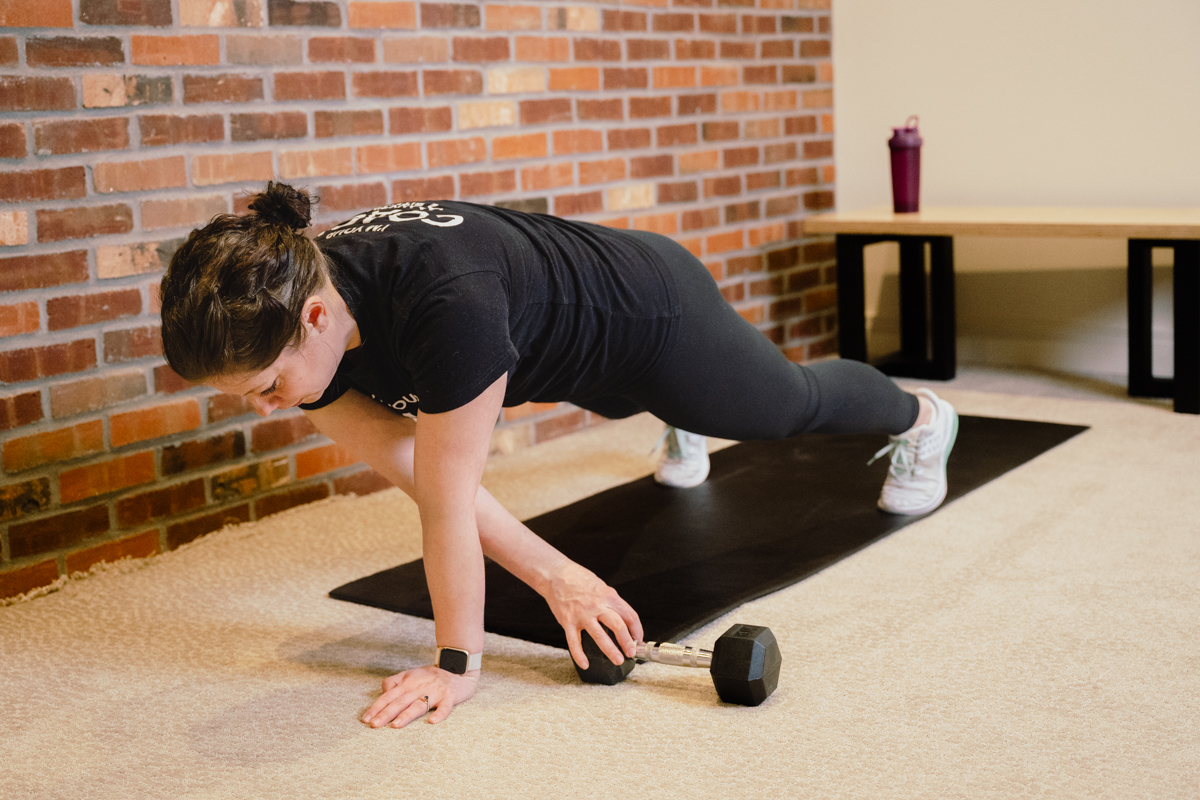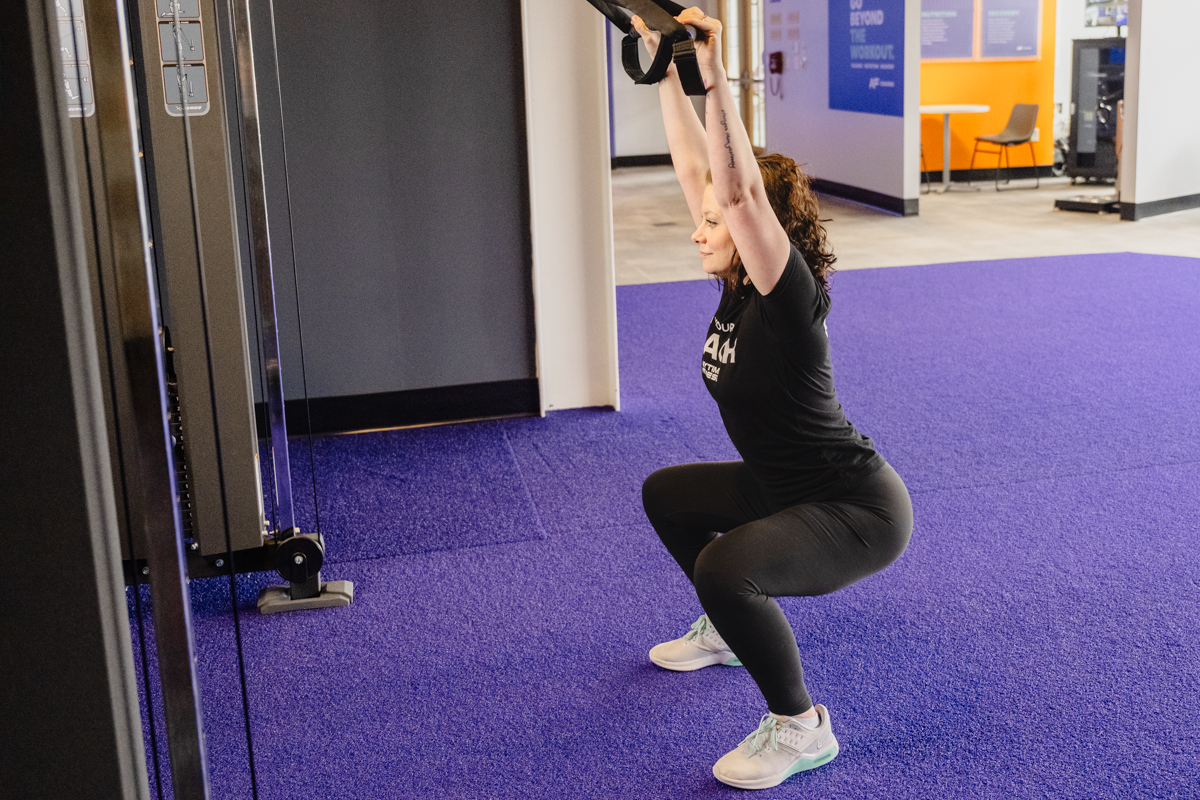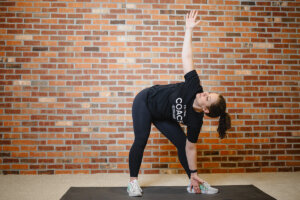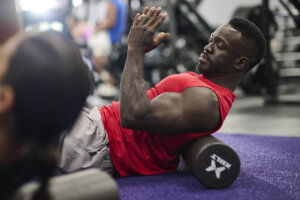What if we told you you’d never have to walk into the gym without a plan again? Here’s the secret: workout splits.
Having a workout split takes the guesswork out of going to the gym and can even help you maximize your strength gains. Let’s talk about the different types of workout splits and how to choose the right one for you — including the best workout split for muscle gain.
What is a workout split?
A workout split is a gym schedule in which you focus on training certain body parts on certain days — or doing cardio one day, strength training the next. Using a split workout routine has several benefits.
- Split workout routines allow you to focus more time and energy on specific body parts to promote muscle growth.
- Workout splits allow time for muscle recovery and can help prevent injury or overtraining.
- Split workout routines also prevent boredom and progress plateaus, giving you a structured schedule to keep you motivated and on track.
Types of workout splits for strength training
There are several ways to break up your workout routine, but these are a few popular workout splits.
- Full-body split: In this workout split, you train all major muscle groups in one session, typically 2 to 3 times a week.
- Upper- and lower-body split: This split divides workouts into upper-body and lower-body days, 4 days a week.
- Push day workout/pull day workout/legs split: This split is separated into push day workouts (chest, shoulders, triceps), pull day workouts (back, biceps) and leg day workouts performed over 3 days, or repeated twice for 6 days.
- Body part split (bro split): In a body part split, also known as a bro split, you focus on one or two muscle groups per workout, spread across the week.
Push Day Workouts & Pull Day Workouts
Push day workouts and pull day workouts are one of the most popular split workout routines because you can work the same muscle groups multiple times a week while giving your muscles time to recover between strength training sessions.
Want to give it a try? Get started with these AF Coach-created push and pull workouts.
How many times a week should you lift weights?
The Physical Activity Guidelines for Americans recommend 150 minutes of moderate to intense aerobic activity every week, with at least 2 days of strength training mixed in.
However, you can lift weights more frequently than that — and you should if your goal is to build muscle mass. Aim for at least 3 to 5 days of strength training each week if you want to see major muscle gains.
How to build the right workout split for your goals
When it comes to choosing the best workout split for your goals, the choice is ultimately yours and depends what works best for you, your body, and your schedule. Use these tips to determine the right workout routine for you.
- Consider your goals: If your goal is muscle growth, a split like the 5-day routine ensures each muscle group gets enough attention and recovery.
- Evaluate your schedule: Consistency is key. Choose a split that fits into your weekly schedule.
- Experience level: Beginners might benefit more from full-body or upper-body/lower-body splits, while intermediate and advanced lifters can opt for more specific splits like push/pull/legs or body part splits.
- Recovery time: Ensure you can recover adequately between sessions. Overtraining can hinder progress, so listen to your body and adjust accordingly.
The best workout split for muscle gain: 5 days
In this 5-day workout split, you’ll train each muscle group once a week, with 2 recovery days mixed in. This split ensures that each muscle group receives sufficient focus and recovery time, which is crucial for muscle growth. Here’s how it works.
This 5-day split plan includes recommended exercises for specific days, along with sample workouts for each day.
Workout Split Day 1: Chest
On chest day, you’ll focus on building strength and mass in the chest muscles (like the pecs, serratus anterior, and subclavius), emphasizing the upper and lower chest.
Examples of chest exercises:
If you’re building your own chest workout, aim to perform 3–4 sets of 6–12 reps for each exercise. Or, try this Coach-created lower chest workout:
Time: 30 minutes
Level: Intermediate
Equipment: Bench press, barbell, dumbbell, cable machine with pulleys, dip bar
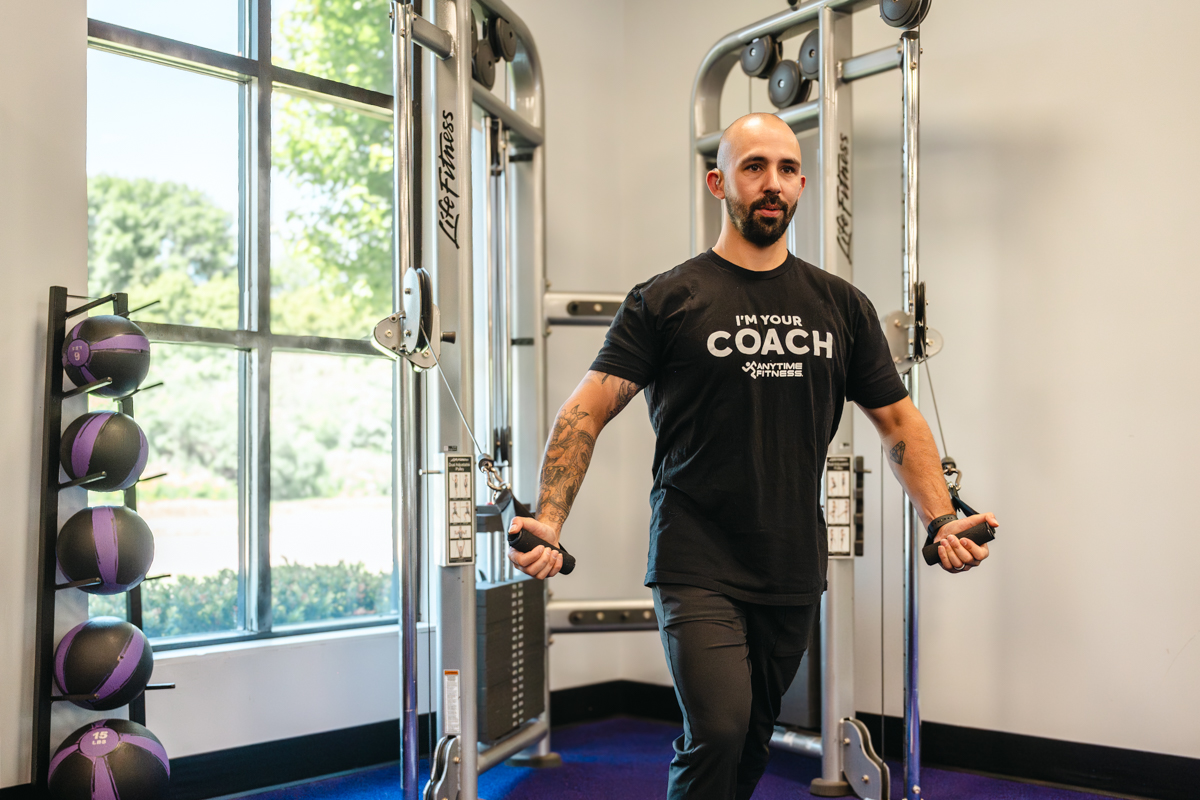
Workout Split Day 2: Back and Abs
On this day, you’ll focus on developing a strong and wide back while targeting the core muscles for stability and strength.
Examples of back exercises:
Examples of ab exercises:
- Knee raises
- Bird dogs
- Oblique pushdowns
- Planks
- Farmer’s carries
Aim to perform 3–4 sets of 6–12 reps for each exercise if you’re creating your own workout. You can also try this 10-minute core workout:
Workout Split Day 3: Shoulders and Traps
On this day, you’ll work to enhance shoulder width and definition, with an added emphasis on the trapezius muscles for a balanced upper body.
Examples of shoulder exercises:
Examples of trap exercises:
- Shrugs
- Reverse shrugs
- Straight arm pushdowns
For your own workout, aim to perform 3–4 sets of 6–12 reps for each exercise. If you want to follow a pre-made workout, try this upper-body workout for healthy shoulders:
Time: 30–40 minutes
Level: Intermediate
Equipment: Barbell, dumbbells, cable machine, kettlebells
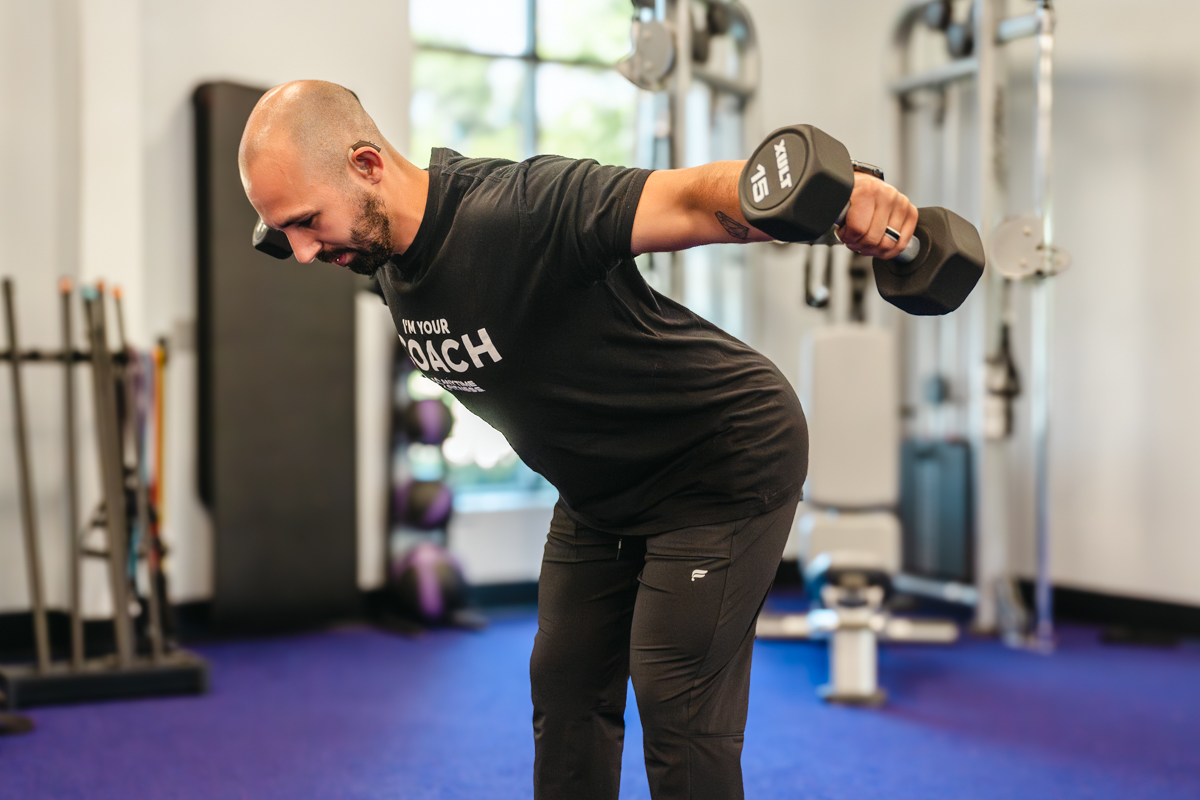
Workout Split Day 4: Arms
When you hit arm day, you’ll isolate your biceps and triceps to promote growth and definition.
Examples of bicep exercises:
Examples of tricep exercises:
- Close grip bench press
- Tricep pushdowns
- Tricep overhead extensions
- Tricep kickbacks
- Tricep dips
Aim to perform 3–4 sets of 6–12 reps for each exercise in your gym routine. You can also try these bicep exercises to shake up arm day:
Time: 20 minutes
Level: Beginner to intermediate
Equipment: Kettlebells, dumbbells, bench
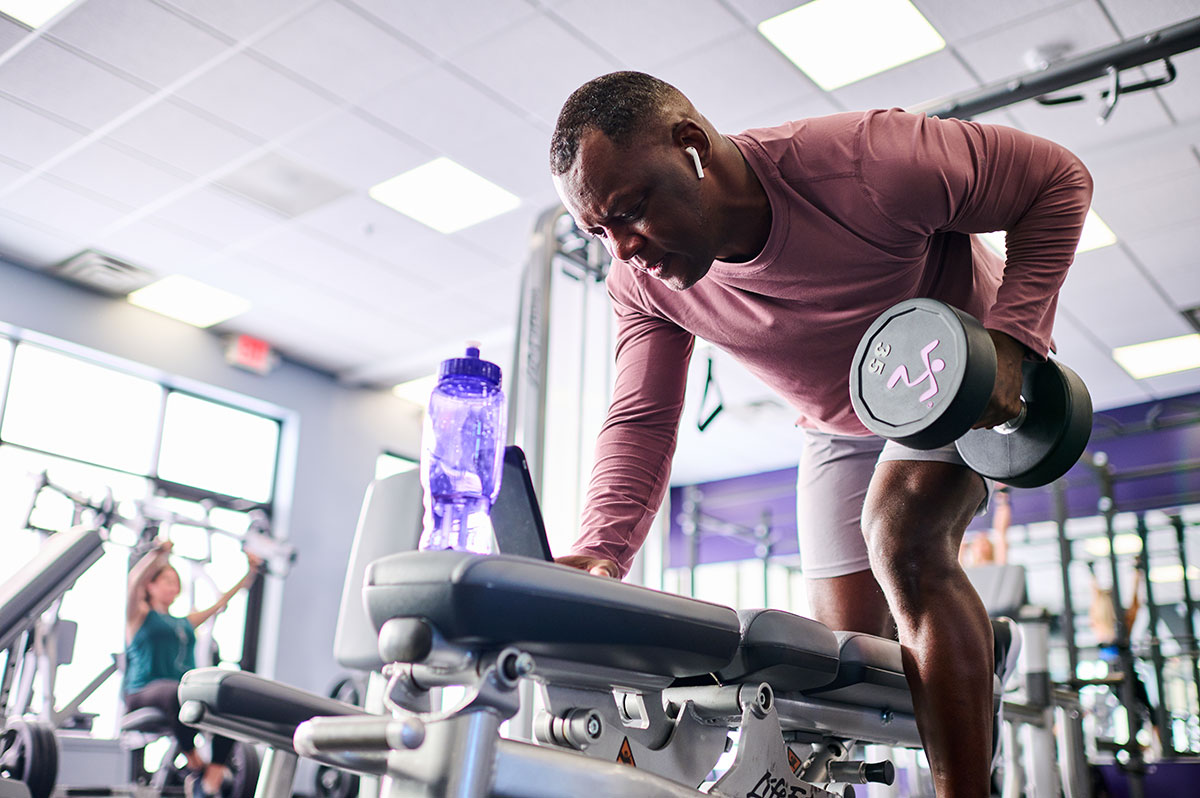
Workout Split Day 5: Legs and Calves
Last, but certainly not least: leg day. On leg day, you’ll build overall leg strength and size, with a special emphasis on the calves.
Leg exercises:
Calf exercises:
- Standing calf raises
- Seated calf raises
- Single-leg weighted calf raises
- Calf presses
- Toe raises
During your workout, aim to perform 3–4 sets of 6–12 reps for each exercise. You can also try this lower-body TRX workout:
The importance of muscle recovery
It may seem counterintuitive, but strength training every day isn’t the best way to gain muscle. Your body needs time to recover and rebuild muscle fibers after an intense strength workout.
Incorporate 1 to 2 days of active recovery and rest into your workout routine to maximize your gains and prevent overtraining, soreness, and injury.
Nutrition and strength training for muscle growth
In addition to rest and recovery, your body needs proper nutrition to promote and sustain muscle mass. It’s important to fill up on protein and carbs before and after your workouts, especially during intense periods of strength training.
Try one of these high-protein recipes to fuel your workout routine:
A final word on split workout routines
Always remember to listen to your body and adjust your workout split accordingly. If you’re feeling overly exhausted after every gym session, it may be a sign to dial it back. If you’re not seeing the results you expected, it may be time to up the frequency or intensity of your workouts.
Whether you prefer a bro split or full-body split, the best gym routine is one that keeps you consistent and fits your lifestyle and schedule.
Get personalized training recommendations, including workout splits, by teaming up with an Anytime Fitness Coach. We’re here to help you achieve your fitness goals — anytime, anywhere.

Coach Mike Voorhees, NASM-CPT, FNS
Coach Mike found his passion for helping people working as a Coach at Anytime Fitness five years ago. Since then, he’s guided hundreds of people toward their fitness goals. Mike’s coaching philosophy resonates on and off the purple turf as he strives to help you become a stronger and more fulfilled version of yourself.
Mike received his Masters in Exercise Science from Concordia University, St. Paul. He is NASM CPT & FNS-certified and an ISSA Exercise Recovery Specialist. Other certifications include corrective exercise, pain-free performance, TRX training, kettlebell training, and more.
